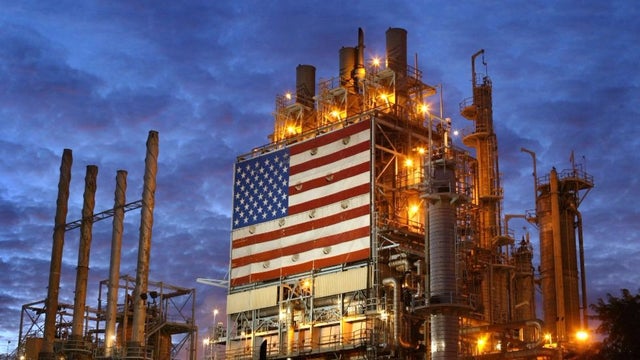The United States quietly surpassed Saudi Arabia and Russia in 2018 as the world’s largest crude oil producer, according to the Energy Information Administration. If you count all petroleum liquids, the U.S is by far the world’s largest producer. This table below, from the EIA, gives you a sense of U.S primacy in petroleum production.
The 10 largest oil1 producers and share of total world oil production2 in 20183
| Country | Million barrels per day | Share of world total |
| United States | 17.87 | 18% |
| Saudi Arabia | 12.42 | 12% |
| Russia | 11.40 | 11% |
| Canada | 5.27 | 5% |
| China | 4.82 | 5% |
| Iraq | 4.62 | 5% |
| Iran | 4.47 | 4% |
| United Arab Emirates | 3.79 | 4% |
| Brazil | 3.43 | 3% |
| Kuwait | 2.87 | 3% |
| Total top 10 | 70.96 | 70% |
| World total | 100.66 |
1 Oil includes crude oil, all other petroleum liquids, and biofuels.
2 Production includes domestic production of crude oil, all other petroleum liquids, biofuels, and refinery processing gain.
3 Most recent year for which data are available when this FAQ was updated.
For the link to the EIA site where this table was found, go here.
U.S Oil and Gas By the Numbers
12.1 million barrels/day – Estimated 2019 crude oil production in the United States
12.9 million barrels/day – Estimated 2020 production
90.2 billion cubic feet/day – Estimated U.S natural gas production in 2019
92.2 billion cubic feet/day – Estimated U.S natural gas production in 2020


